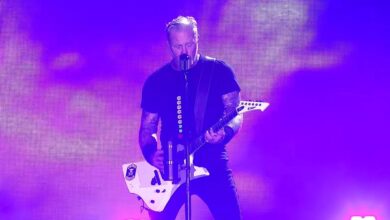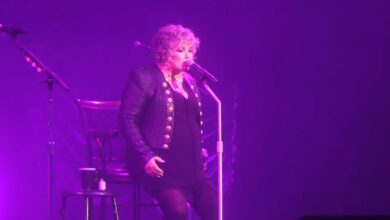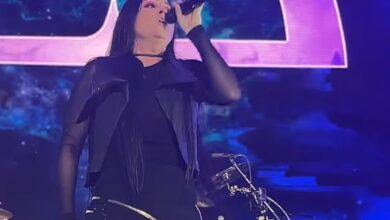Melting Winterland: KISS Set San Francisco Ablaze in 1975 — The Night Rock Theatrics Redefined Live Performance History
Melting Winterland wasn’t just a punchy bootleg title—it was a weather report. On January 31, 1975, San Francisco’s Winterland Ballroom, a onetime ice rink reborn as Bill Graham’s cathedral of volume, turned into a sauna the instant KISS hit the stage. The house haze—half dry ice, half human anticipation—hung like a curtain as the band slid into “Deuce,” and you could feel the room contract around the riff. This wasn’t yet the arena-era juggernaut with trucks of pyro in tow, but the promise was already alive in the air: four street-level killers with a big-league showman’s instinct, testing how much heat a 5,400-cap room could hold before it boiled over.
From the jump, the setlist read like a thesis on velocity and pose. “Deuce” into “Strutter” is a statement of priorities—groove first, glamour second, but never one without the other. “Got to Choose” put a little midnight in the middle of the room, and “Hotter Than Hell” made good on the title with a mid-tempo stomp that landed like bootprints. KISS in ’75 had a knack for making medium tempos feel gigantic; they filled the space between kick and snare with attitude, then cut that attitude into confetti with guitar stabs that sounded like neon being bent.
Winterland’s magic was part architecture, part psychology. Bill Graham’s rooms didn’t just host bands; they inducted them. The long floor and clean sightlines encouraged the kind of collective response that turns a concert into a referendum, and KISS thrived on approval given loudly. You can hear it in the way the crowd snaps to attention during “Firehouse,” clapping in right-angled time as the sirens hit. Every flash pot feels earned because the music has already lit the fuse; the theatrics don’t distract so much as underline. Spectacle, here, is punctuation.
“100,000 Years” was the axis where the night spun from great to historic. On record, it’s a strut; on this stage, it’s a living diorama of what made the band dangerous—space, stamina, suspense. The groove moves like a panther through tall grass, and then Peter Criss shifts into his extended drum feature, a miniature rock opera in skins and cymbals. It isn’t indulgent; it’s architectural. He stacks tension in phrases, plays call-and-response with the room, and modulates dynamics with a pit boss’s sense of crowd control. When the band slams back in, the cheer feels like a collective exhale.
Ace Frehley turned guitar tone into atmosphere. At Winterland, his sound carried that perfect equilibrium of bite and bloom—notes arriving with a flinty attack, then flowering into a halo that hung over the floor. He phrases like he’s telling you a secret he can’t quite keep, throwing blue notes across hard rock changes with a casual authority that makes the whole band feel slyer. Camera close-ups from circulating footage catch his left hand skating the fretboard during “Watchin’ You,” and you’re reminded that beneath the kabuki there’s a craftsman with a carpenter’s ear for fit.
Paul Stanley had already discovered how to make a room do choreography with nothing more than timing and a grin. The banter is flirty without being flimsy, the cadence pitched to ride the crowd’s own rhythm rather than sit on top of it. He’ll spike a line into the silence just before a chorus and get a wall of noise back, then hold the mic stand like a scepter while the band hits the downbeat. The frontman’s trick is knowing when to speak and when to step aside. Winterland proved he’d learned both.
Gene Simmons, often reduced in legend to breathing fire and bookkeeping, played bass like an architect of foundations. The lines are simple, sure, but they’re elastic in the right places and steel-bar strong in the rest. On “Cold Gin,” he locks with Criss to lay tracks you can hear the whole show riding on; on “Parasite,” he pushes the pocket half a step forward so the chorus feels like a door blowing inward. That ballast gave Ace the runway to take off and Paul the safety net to dare the crowd. It’s a lesson in how big music stays tight.
The production did a lot with a little. This isn’t the later stadium-scale light grid; it’s a handful of sculpted looks, timed to musical events, and aimed as much at casting graphic silhouettes as illuminating faces. Pyro doesn’t arrive as glitter; it hits like percussion, bang-on with the kit, creating visual backbeats. You can hear the room, too—the wood in the walls, the bounce in the balconies, the way claps slap back at the stage a millisecond later. The tape feels three-dimensional because the show did.
Context sharpens the edges. The Hotter Than Hell tour wasn’t gilded; it was grueling. KISS had been road-hardening for months, building tightness by repetition and courage by necessity. Winterland sits in that sweet spot where a band is still hungry but fully lethal, able to shift from kill shot to show tune in a bar and a half. The songs didn’t change, but the reflexes did; you can hear how “Black Diamond” carries its patience like a weapon, holding the blast until the last possible second, then letting it bloom like a film cut.
Audience energy forms the fifth member here. San Francisco crowds have a reputation for participation, and on this night they sang, clapped, and shrieked like they were auditioning for the myth. There are moments when the band rides the room’s volume the way a surfer steals a wave—leaning back, letting the cheer crest them into the next section. That reciprocity is why the footage still excites: you’re not just watching KISS, you’re watching an organism that includes them and 5,000 of their newest accomplices.
What separates Winterland from a hundred other hot nights is dynamic intelligence. KISS didn’t just play loud; they played with loud. Verses crouched, pre-choruses coiled, choruses pounced. Bridges flickered so refrains could explode. The stop-time in “Let Me Go, Rock ’n’ Roll” doesn’t merely dramatize the groove; it teaches an audience when to gasp. That tension-release literacy—stagecraft masquerading as instinct—turns a rock show into a page-turner you can’t put down.
The visuals mattered because the music justified them. The costumes read from the back row, but the harmonies snap together with barbershop precision. Solos speak the song’s mother tongue rather than bolting on dialects from a different record. Tempos never run away, even when the crowd does. That balance—bombast strapped to discipline—was KISS’s secret in 1975. The Winterland tape is proof stamped in heat and echo.
Winterland itself plays co-star. The venue had a legend for converting good sets into lore, and this is one of its crown jewels. Built for ice, remade for electricity, the room carried a resonance that made drums sound taller and cheers sound closer. Bill Graham’s gift was calibrating scale: he could make a theater feel like an arena and an arena feel like a living room. KISS arrived with a show designed to be bigger than life; Winterland obliged by making life bigger.
If you want to track the moment the band outgrew clubs, cue the ending run. “Cold Gin” strides like a prizefighter who knows the cards are stacked his way. “Black Diamond” takes its curtain with the grace of a guillotine—the last chord clean, the lights cutting down the center, and the floor erupting with a sound that feels like relief and challenge at once. You can almost see trucks gathering on an imaginary loading dock, ready to scale this theater act to coliseum size.
Half a century later, Melting Winterland still functions as both artifact and blueprint. It’s how you show a skeptic that KISS always had the songs beneath the spectacle, and how you remind believers that the spectacle was never a crutch. The film isn’t just exciting; it’s instructive. You can study the cueing, the dynamics, the crowd handling, the way a chorus lands harder when you leave air before it. It’s a masterclass you can dance to.
What lingers most is the sensation of a band catching up to its own myth in real time. By the end of the night, KISS weren’t borrowing the theater’s aura; they were lending it theirs. The room’s sweat became part of the instrumentation, the crowd’s voice wrapped itself around the backing vocals, and the cameras—not yet ubiquitous—captured a performance designed to be remembered. Melting Winterland didn’t freeze a moment; it cast it, solid and glowing, into rock’s permanent collection.
And when the house lights finally crept back, you could imagine Bill Graham at the side of the stage, that half-smile he wore when a gamble paid off. He liked shows that felt necessary. This one did. Not because it was the biggest or the flashiest by later standards, but because it proved a thesis: that theater and thunder can coexist, that discipline can sell chaos, and that four determined players can make a medium-sized room feel like the center of the world for ninety straight minutes. Winterland melted; the legend set.





